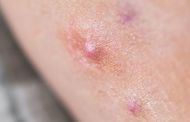
New Review into Radiation Therapy in the Management of Hidradenitis Suppurativa
The IORBC welcomes a new review into the clinical evidence for the use of radiotherapy in the management of hidradenitis suppurativa as well as indications and techniques.
The review suggests that radiotherapy is a safe and effective treatment option that should be considered for patients with recalcitrant hidradenitis suppurativa.
Hidradenitis suppurativa (HS) is a chronic autoinflammatory condition characterised by painful boils of the sweat glands with associated abscesses and fistulas. HS can have a severe impact on a person's quality of life and ability to function — it affects intertriginous sites causing painful, disfiguring skin changes such as swelling, malodor, pruritis, and drainage.
According to the report, patients ‘with mild disease are treated with antibiotics.’ Symptom flares are often managed with ‘intralesional triamcinolone injection and antibiotics’, and in moderate to severe disease, the addition of an ‘immunomodulating agent such as adalimumab, or immunosuppressants such as cyclosporine or corticosteroids is recommended.’ Surgical treatments include wide local excision, laser ablation, or deroofing.
As noted in the report, when the disease presents escalating severity and chronicity, ‘long-term pain management becomes a problem for many patients’ — in fact, ‘HS experts believe there is still significant room for improvement in its management’ — hence the opportunity for the use of radiotherapy as a treatment option.
This is because radiotherapy has an ‘anti-inflammatory effect at low doses and has shown efficacy in the treatment of other benign conditions mediated by excessive inflammation, such as osteoarthritis, as well as in other dermatologic inflammatory phenomena, such as keloids.’
Having reviewed the clinical evidence for the use of RT in the management of HS as well as indications and techniques, the report authors found the key takeaways regarding treatment recommendations to be:
Patient selection:
Age >20 years old (can consider for younger patients on a case-by-case basis)
Hurley stages 2-3 disease
Failed maximal medical therapy or are ineligible
Patient setup/target delineation:
Set up based on treatment site, comfortable/reproducible
Wire extent of disease at simulation
Dose:
4-15 Gy/1-10 fractions
Assessment/follow-up:
In conjunction with dermatology
Acute side effects: 1-2 weeks posttreatment
Reassess 6-12 wk
Retreatment:
Can be considered based on the initial response
Wait at least 3 mo since the previous course of therapy
In conclusion, using radiotherapy to treat HS may avoid morbid and costly approaches such as biologic agents and surgical intervention.
Please follow this link to access the full report via ASTRO:
https://www.practicalradonc.org/article/S1879-8500(25)00012-8/abstract
Citation:
Radiation Therapy in the Management of Hidradenitis Suppurativa
Myers, Bryn et al.
Practical Radiation Oncology, Volume 15, Issue 4, 326 - 331